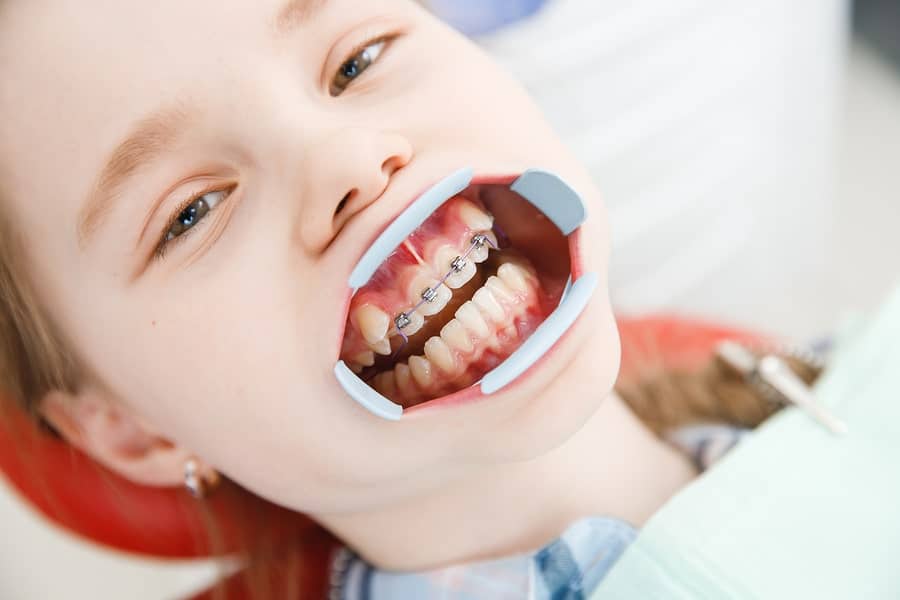- +917892951808
- Indiranagar, Bangalore
Best Dental Clinic In Bangalore Indiranagar | Best Dentist in Bangalore Indiranagar
- Home
- About Us
- Treatments
- Blog
- Contact Us
What is the right age for a child to get braces?

Article at a glance

- Does your child need dental braces?
- What is the right age for your child to get braces?
- What are braces and orthodontic appliances?
- Why do dentists recommend braces for your child?
- What signs should parents notice before visiting a dentist for braces?
- How does the dentist decide if your child needs braces?
- How braces are fitted in children?
- How can your child take care of the braces?
- Can my child get allergic to dental braces?
- How long should your child wear braces?
- How are the braces removed?
- how to avoid injuries from braces in children?
Does your child need dental braces?
A dentist usually recommends braces to improve the child's physical “orofacial” appearance. Through orthodontic treatment, issues like crooked or crowded teeth, underbites, overbites, incorrect jaw position and disorders of the jaw joints are corrected.What is the right age for your child to get braces?
Children with orthodontic issues can benefit from treatment at almost any age. The most suitable time for placement of braces is between 10 years and 14 years of age, while the mouth and head are still growing, and teeth are more responsive to straightening. Braces aren't just for kids. Many adults also wear braces to correct minor problems and to improve their smiles.What are braces and orthodontic appliances?
Braces and orthodontic appliances are used to correct issues including crooked teeth or a misaligned jaw, talk to his dentist. An orthodontist specializes in correcting such issues and perfecting smiles using orthodontic appliances, such as:- Bands
- Wires
- Brackets
- Rubber bands
- Headgear
- Retainers
- Clear aligners
Why do dentists recommend braces for your child?
Though there are a variety of dental appliances used, braces are still the primary means for correcting misaligned bites and straightening teeth in children. Braces apply pressure to the jaws and teeth to move them into a proper position. Early in the days' Braces were a shiny mouthful of metal, but recently much better options are available where brackets are bonded directly to the tooth's surface. Braces are available in various materials such as:- Stainless steel
- Plastic
- Ceramic
- Combination of materials
What signs should parents notice before visiting a dentist for braces?
Kids may need braces for many reasons, including:- Crooked teeth
- Overlapping or overcrowded teeth
- Bad bite” known as malocclusion, when there's a difference in the sizes of the top and bottom jaws leading to overbite or underbite
- losing baby teeth too soon,
- Accidents,
- Habits like thumb sucking.
How does the dentist decide if your child needs braces?
The orthodontist after thoroughly examining your child's teeth, mouth, and jaw, may ask your child to bite the teeth together and ask questions to see if the child has problems in chewing or swallowing, clicking or popping of the jaw. The orthodontist might take X-rays of the mouth and teeth to check the teeth positions and if any permanent teeth still need to come in. The orthodontist may also make a mold (or impression) of your child's teeth that will help to decide which treatment options are best.How are braces fitted in children?

- A cheek retractor will be used to keep the teeth dry and visible during the procedure.
- The teeth are polished to ensure the brackets will bond adequately, after which they are air-dried.
- A conditioner is applied on thefront surfaces of the teeth to preparethem for bonding the brackets.
- This is cleaned are dried, and an adhesive primer is applied on the teeth to enhance the bonding process.
- Cement is applied on the back of each bracket, which is then applied to the predetermined positions on the teeth.
- Excess cement is removed, and high-intensity light is used to harden the brackets into place
- The retractor is removed, and then the dental arch wires are put into place.
How can your child take care of the braces?
As food can easily get stuck in wired braces, kids need to Brush after meals and floss everyday (special flosser are available to use in and around braces). Regular dental check-ups and cleaning to look for cavities are also a must. Your child should avoid certain foods such as:- popcorn
- hard and sticky candy
- Chewing gum
- Sugary sodas and juices
